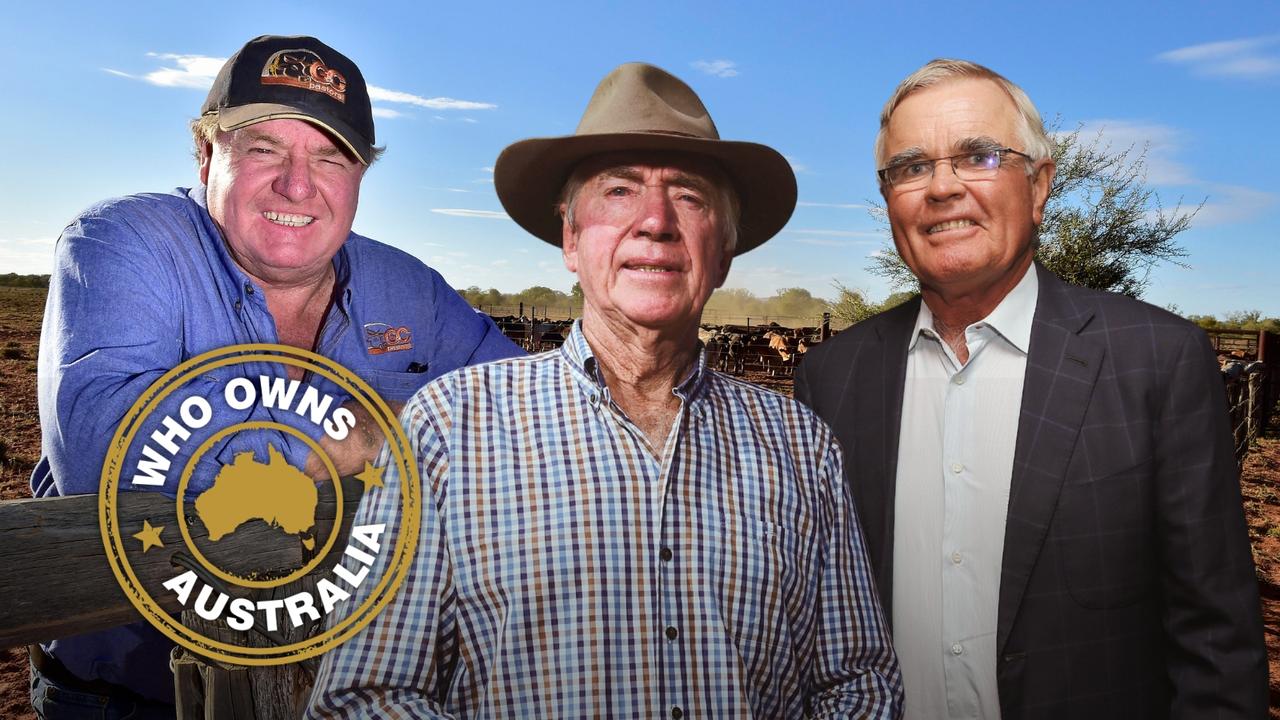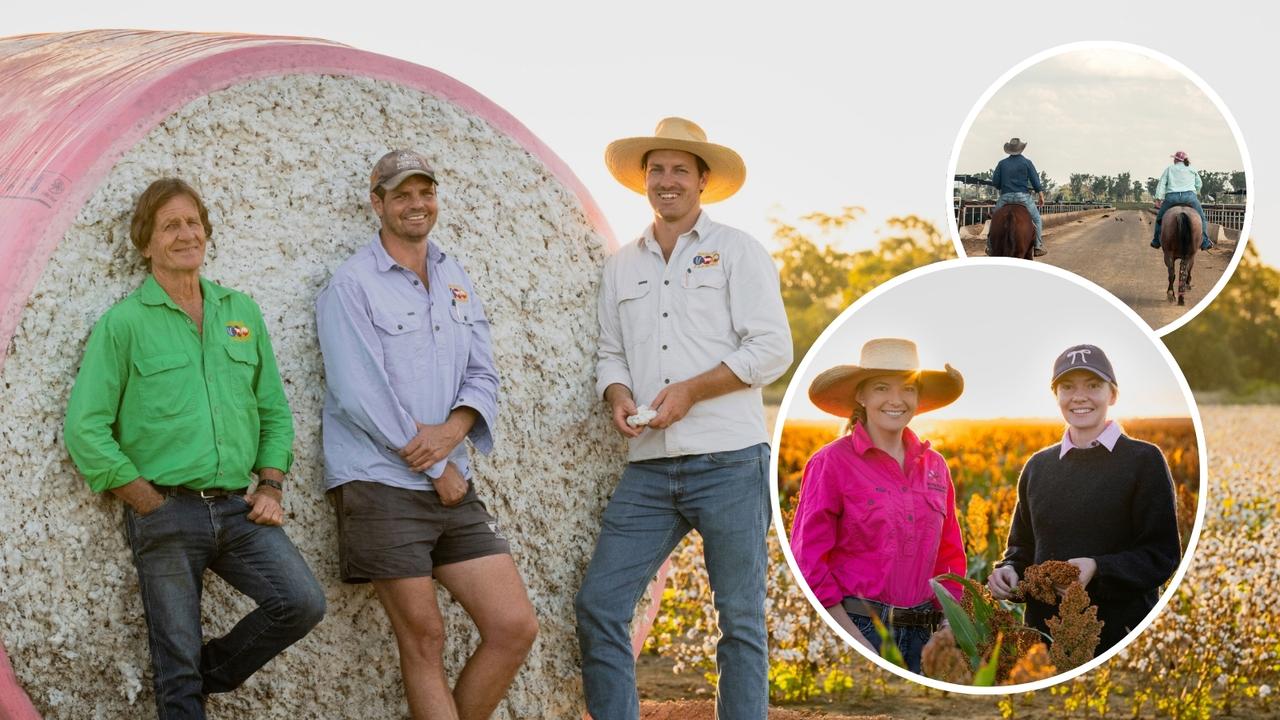Loam Bio: CarbonBuilder seed treatment locks in soil carbon and $150m of funding
Loam Bio co-founder Tegan Nock and her team of young scientists have raised $150m to back their revolutionary seed treatment.
What’s next in Australia’s sustainable grain-growing revolution?
It’s a question coming straight from farmers, who are calling for more science-proven tools that deliver soil-health and environmental benefits, while ensuring paddocks can keep delivering plump grains to feed the hungry world.
Tegan Nock is determined to give them an answer.
The 33-year-old grew up on a mixed livestock and cropping property in Central West NSW. At the age of just 29, she went from farmer to founder launching biotech start-up Loam Bio.
Loam has created a groundbreaking biological seed treatment that promises to do all of the above, while also contributing to emissions reduction and boosting crop yields.

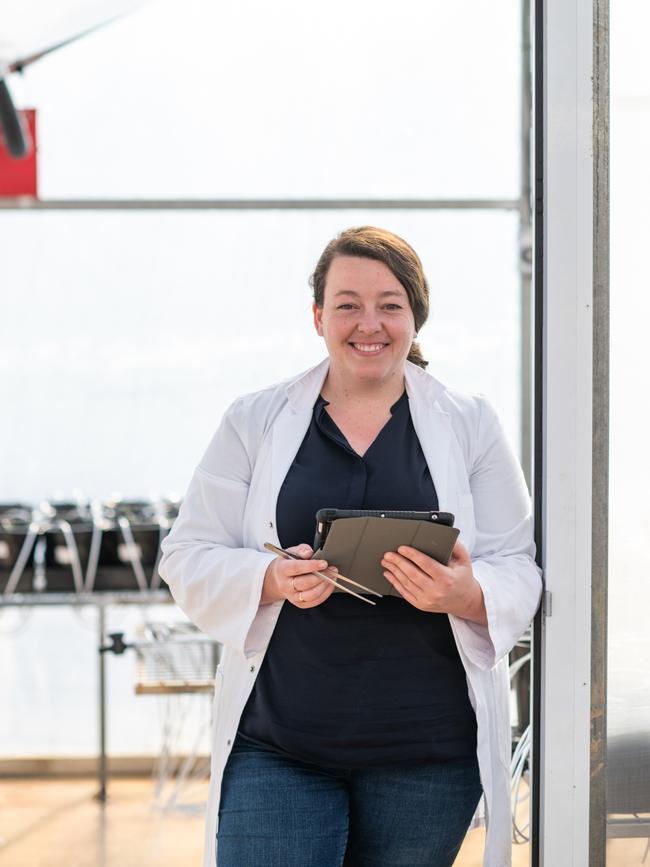
Since kicking off with investor backing in 2019, Nock and her co-founders have built a workforce of 130 people – including farmers, scientists and agronomists – with average age a fresh-faced 32. At their headquarters in Orange, the young pioneers are developing a microbial inoculum from specific strains of fungi that increase the natural ability of crops to draw down carbon from the atmosphere and store it in its most stable form in the soil.
Nock says not all soil carbon is created equal.
“Our seed treatment microbial product colonises the plants’ root systems,” she explains.
The fungi – in powder form that is applied to seeds at planting – takes the carbon-rich exudation that plants naturally ooze into the soil and stabilises it.
“It locks it up … they’re not the fast moving types of carbon that you’ll lose within a drought or that you’ll lose within a flooding season,” Nock says. “They’re the types of carbon that stick around for decades, hundreds of years, into the centuries.”
In technical terms, Loam’s CarbonBuilder seed treatment is a beneficial fungi that increases carbon levels in the stable “aggregate” and highly stable “mineral associated organic matter” soil carbon pools – instead of in the least stable “particulate” (also called labile) pool.
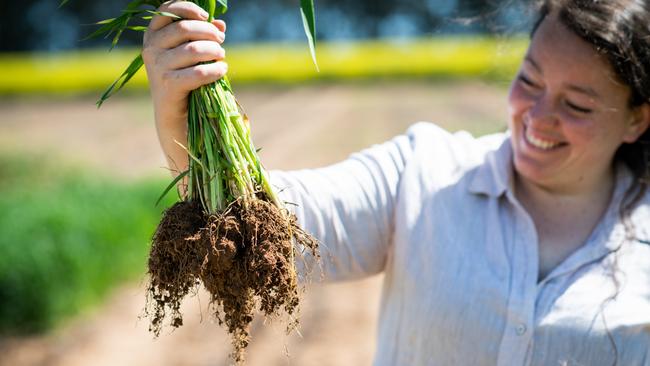
Loam’s technology, Nock says, has the potential to turn the world’s cropping farmland into a mega carbon sink.
“We’ve got 1.6 billion hectares of farmland that’s managed every year by a workforce of just over a billion people, so our potential to have immediate impact there is really high,” she says. “I think that our soils are also the area where the benefits (of carbon sequestration) also benefit productivity, it benefits our primary food systems, benefits our farming businesses.”
EARLY ADOPTER EXPERIENCE
Broadacre farmer Steve Nicholson, from Forbes in Central West NSW, has been working with Loam since its inception and is an early adopter of the technology.
He shares Nock’s passion for finding biological solutions that offer long-term soil health benefits and can reduce reliance on synthetic inputs.

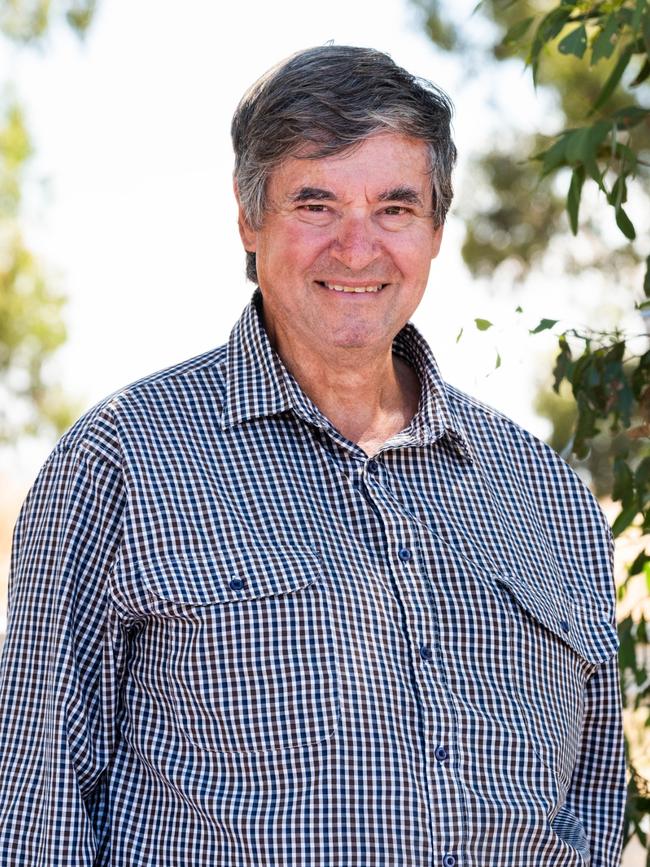
With 40 years of experience as an agronomist, Nicholson has been using a no-till cropping approach for the past 23 years. He and his family grow wheat, barley and canola across about 3000 hectares of a 4000-hectare aggregation of leased and owned land.
“The basic line in on our farming operation is world best practice, so we just go constantly looking at what’s going on in the world,” he says. “What new technologies are out there … and if they are adoptable or adaptable into our farming system.”
This drive to be at the forefront of cropping innovation has helped transform Nicholson’s soils, which he says were fragile and dust-like two decades ago.
“I can grow carbon in my soils … just by good stubble retention, and a minimum zero-till type farming system,” he says. “I have. My soil tests show it.
“But we know it’s labile.”
Labile carbon is easily released to the atmosphere through soil disturbance.
“If I had a brain fart and decided to tell the boys to go out and just plough the whole place 10in (25cm) deep, most of that carbon would be lost,” Nicholson says.
What Loam’s science shows, he says, is an endophyte added to the soil at seeding can actually produce carbon at depth, which would be a “game-changer” for growers.
“It’s a completely self-fulfilling prophecy,” he says. “Grow more carbon, you grow a healthier crop. Grow a healthier crop, you grow more roots. Grow more roots, you have more sites for the endophyte to fix, you grow more carbon.
“Big root systems, big leafy crops on top. Higher yield. Better moisture retention. Better moisture utilisation. Better fertiliser utilisation.
“Round and round it goes.”
It’s exactly the type of solution Nock’s family was hoping to find, after they went down the no-till farming route decades ago.
Growing up on a 2800-hectare mixed livestock and grains property at Bogan Gate – “the centre of the universe that doesn’t get a bad rap for its name at all” – her family produces wheat, barley and canola.

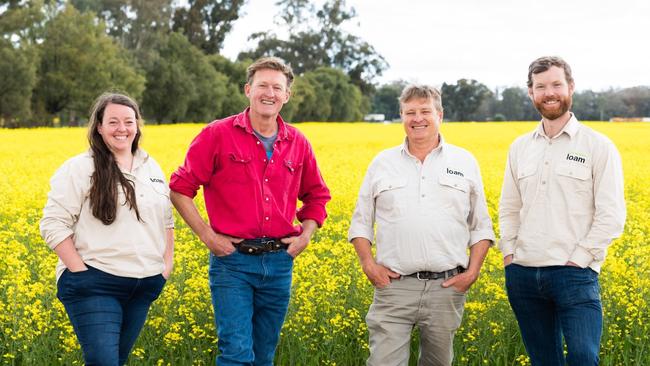
The young entrepreneur always planned to be a farmer, inspired by her region’s forward-thinking growers who were proponents of no-till practices such as keeping stubbles as mulch, and sowing seeds directly into undisturbed earth.
“Watching that wave of no-till farming coming through; the enthusiasm and the excitement … it’s typically a seven-year time frame from when you’re starting to implement no-till to when you can see a soil really rebound, and I’d watched that process happen on-farm,” Nock says.
“And I loved the fact that it was a technology that aligned both from a soil-health perspective but also an economics perspective. It just made sense. A win-win-win scenario.”
Eventually, however, no-till growers’ gains start to plateau. Nock and fellow farmers, including Nicholson, knew there had to be more ways to improve.
“I’d been doing a lot of work on-farm looking at what was next when it came to inputs, ag sustainability, ag innovation,” Nock says. “Always pushing the envelope to see what new practices we could adopt … and I’d done a lot of work trialling biologicals.
“We’d been through some pretty horrendous droughts by that stage and were really just prioritising soils.”
About a decade ago, a group of concerned growers and agronomists started digging into research by microbial ecologist Professor Peter McGee, from the University of Sydney.
“He was really interested in what functional role microbes played in carbon sequestration in our soils,” Nock says. “So, when he retired we were really interested in the work and got worried that there would be no avenue to continue it.”
Nock and her four Loam co-founders – agronomist Guy Webb, crops and beef farmer Mick Wettenhall, market specialist Guy Hudson and TV producer-turned-farmer Frank Oly – picked up where McGee left off.
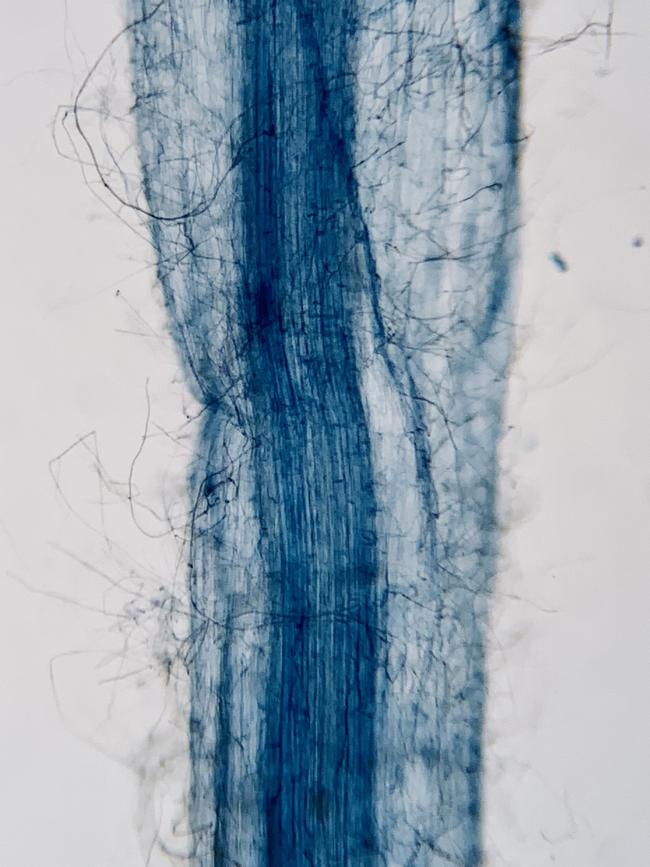
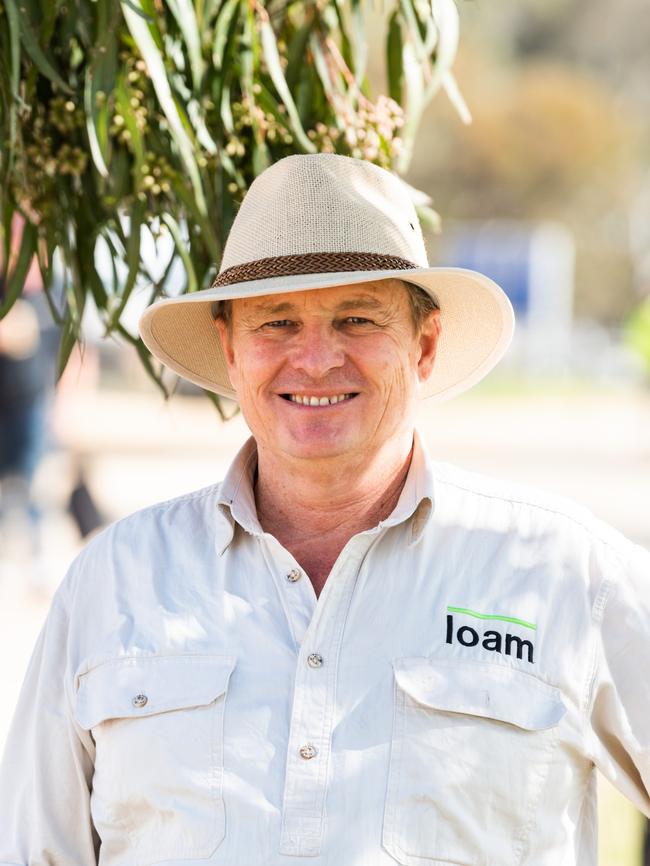
Their mission was to find out everything there was to know about carbon-capturing fungi, and turn it into a commercial solution that would be beneficial, practical and scalable for farmers.
“I could see how being able to have the right kind of technologies in farmers hands was just so important,” Nock says.
CarbonBuilder is now in commercial production in Australia and the US, available for canola and barley here, and soybeans in North America.
It has been put the through rigorous tests for the past four years.
Last year, field program manager Brooke Bruning and her team collected 30,000 soil samples from 90-100 trial sites.
Results from that season’s canola tests showed an average increase in soil carbon of five tonnes a hectare for treated crops. Yield gains of 5 per cent were also achieved.
While last year happened to also be a cracking canola season, Nock says even in poorer growing conditions CarbonBuilder delivers an increase of two to three tonnes of soil carbon a hectare.
With more than 3.4 million hectares planted to canola in Australia in the 2023-24 season, and four million hectares to barley, if just 5 per cent of Aussie growers adopt the tech – and it delivers as promised – growers could lock more than 700,000 tonnes of extra carbon in soils a year.
US soybean production dwarfs those numbers, with growers planting 35.4 million hectares in 2022.
Nicholson says the price to inoculate – from $12.50 to $25 a hectare, depending on level of service – is tiny compared to the benefits.
“For its potential upside, it’s a no-brainer,” he says.
YOUTH DELIVERS ADDED VALUE
Loam’s youthful team, anything-is-possible attitude and rigorous scientific approach attracts investment – $150 million in backing so far from groups including Horizons Ventures, the Clean Energy Finance Corporation, Mike Cannon-Brookes’ Grok Ventures, GRDC’s GrainInnovate and CSIRO’s Main Sequence Ventures.
It also attracts other bright young minds.
Nock counts herself an “elder” at the age of 33, and says young people are making the move from fields outside of agriculture, and uprooting from cities to migrate to Orange, to fill Loam’s ever-expanding list of roles.
They include experts who can identify new fungal strains of interest, catalogue Loam’s microbial library, conduct field tests, validate data, market the product, work directly with farmers and develop Loam’s soil project management service SecondCrop.
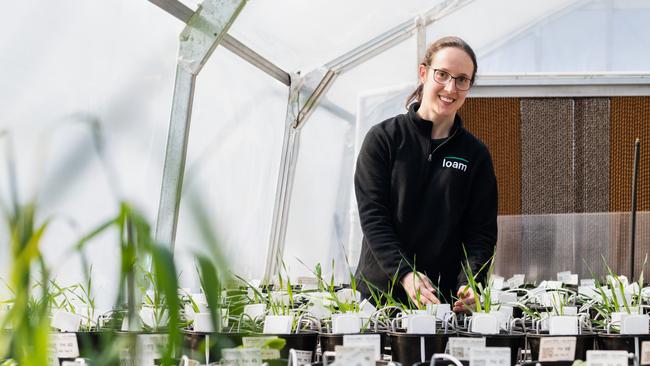
Field trials manager Brooke Bruning, 31, has a PhD in plant phenotyping, and moved from Adelaide to Orange more than three years ago, joining Loam when they had just 10-12 employees.
“Throughout the interview process is when I really started learning and understanding what Loam actually did and what their mission was,” Bruning says.
“The more I learned about what they were trying to do, the more I just loved the idea.”
From a starting base of six field trials in 2020, Loam’s research has increased exponentially.
“In 2022 we had over 100 (trials) in a year,” Bruning says.
“There’s been a very fast increase in both the number of trials in the past couple of years and the geographies … We have them in nearly every state except the Northern Territory and Tasmania. They’re getting bigger and they’re trying to answer more complex questions, so you have to make sure they’re designed well, so that you know statisticians can work with the results.”

Microbial library research associate Ruby Pippen, 24, joined Loam last year, fresh out of a double degree in law and science, specialising in synthetic microbiology.
Growing up in the NSW dairy-farming town of Gloucester, Pippen thought once she left, she would not be returning to a regional area, and certainly not so soon.
“I thought with a science degree, the jobs are in big cities,” she says. “The thing I really loved most about law school was climate law. So being part of a company that’s working on that issue and then being able to dabble in lots of different scientific fields … I just thought that the diversity of the role, I couldn’t pass up.”
Since joining, Pippen has worked screening fungi, experimenting in molecular biology and with the bio-production team.
She has been promoted to manage Loam’s microbial library, where more than 1000 fungal spores and 100 microbial strains are carefully stored.

More senior, 41-year-old product development scientist Anders Claassens spends a huge amount of time on the microscope, visualising how fungi behave. His job is to identify new strains, and new potential benefits fungi can provide for crops.
A former graphic designer with a love of science fiction, Claassens made a huge career change after travelling South America in 2012.
Spending time in the Amazon “where fungus plays a much more central role in the day-to-day of people’s lives”, prompted him to rethink what he wanted to do with his life.
“I just put graphic design behind me,” he says. “I enrolled in an environmental science degree. I knew when I started what I wanted to do, I wanted to work in fungal symbiosis … at the interface between fungi and plants.”
Claassens has spent the past 10 years on PhD research to help farmers overcome the barriers to inoculation success in broadacre agriculture – specifically sugarcane. His research led him to cross paths with Guy Webb, who introduced him to Nock and the Loam founders.
Through his PhD, and his role at Loam, he works directly with growers who are highly receptive to the benefits of biological inputs.
“Some of these guys have been farming for 60 years,” he says.
“And when they see what’s going on underground, they just light up because not only are they farming a crop and a commodity that we all benefit from, but they’re also farming a microbial population.
“A lot of these growers have put a real lot of effort into that stewardship without knowing it – just by good practice.
“When I show them the fruits of their labour in terms of what they’ve done with their microbial populations, the look on their faces is priceless.
“They had no idea that just beneath their feet that was all this correspondence and exchange between microorganisms and their crop, and that that could actually be leveraged for their own benefit.”



